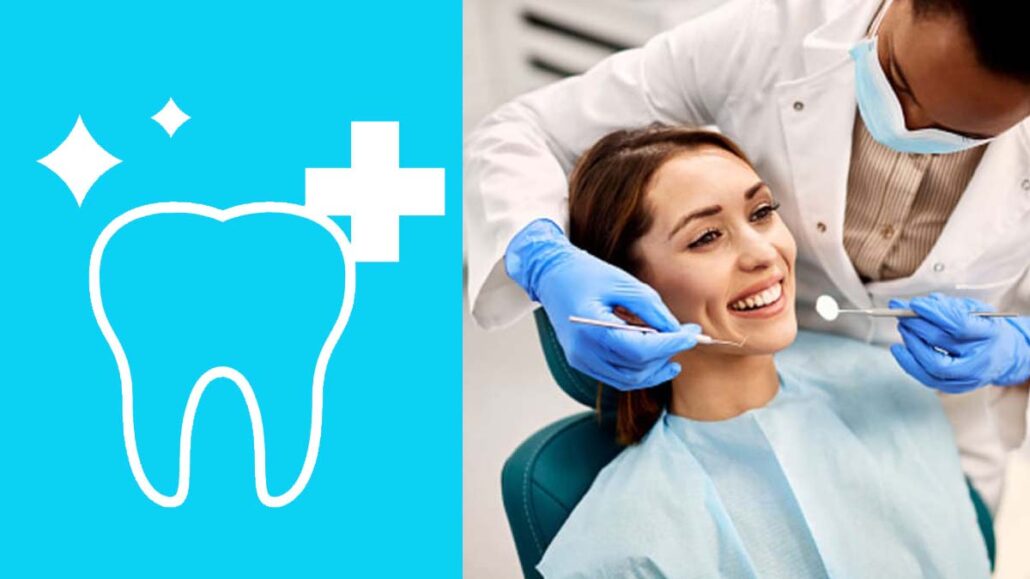College life is a whirlwind of late-night study sessions, caffeine-fueled cram nights, and (hopefully) endless pizza. But while you’re busy conquering textbooks and exams, don’t forget to conquer your smile too! Maintaining good oral health is crucial for both your physical and mental well-being, and that’s where student dental insurance comes in.

But with so many options and confusing jargon, navigating the world of student dental insurance can feel like deciphering an ancient scroll. Fear not, fellow scholars! This comprehensive guide will equip you with all the knowledge you need to choose the perfect plan, keep your pearly whites sparkling, and avoid any financial surprises along the way.
Why Students Need Dental Insurance
Let’s face it, neglecting your teeth is a recipe for disaster. Cavities, gum disease, and even tooth loss can significantly impact your overall health, academic performance, and confidence. Regular dental checkups and preventive care are crucial, but without insurance, the costs can quickly pile up.
Peace of Mind:
Regular dental checkups and cleanings are key to preventing cavities, gum disease, and other oral health issues. Student dental insurance helps cover these essential services, giving you the peace of mind to focus on taking that next exam, not worrying about your dental bill.
Cost-Effective Care:
Dental emergencies can happen to anyone, and without insurance, the cost of fillings, root canals, or even braces can leave you with a serious case of sticker shock. Student dental insurance helps minimize these financial burdens, making quality dental care more accessible and affordable.
Healthy Smile, Happy Future:
Good oral health plays a vital role in your overall well-being, impacting everything from your physical health to your confidence and self-esteem. Investing in student dental insurance is an investment in your future, ensuring you maintain a healthy, happy smile for years to come.
Types of Student Dental Insurance Plans
Preferred Provider Organization (PPO):
PPO plans are the most flexible type of dental insurance, as they allow you to choose any dentist you want, in-network or out-of-network. However, you will typically pay more for out-of-network care. PPO plans also typically have annual deductibles and maximum out-of-pocket limits.
Dental Health Maintenance Organization (DHMO):
DHMO plans are similar to HMO plans for medical care. You must choose a dentist within the plan’s network, and you will need to get a referral from your dentist to see a specialist. DHMO plans typically have lower premiums than PPO plans, but they offer less flexibility.
Direct Benefit:
Direct Benefit plans are a type of indemnity plan that pays a fixed amount for covered services, regardless of the dentist you choose. This can be a good option if you have a particular dentist you like to see, but it is important to be aware of the out-of-pocket costs associated with these plans.
Discount plans:
Discount plans are not insurance, but they can offer significant savings on dental services. With a discount plan, you pay an annual fee and then receive discounts on services from participating dentists. Discount plans can be a good option for people who don’t need comprehensive dental coverage or who have a limited budget.
The best type of student dental insurance plan for you will depend on your individual needs and budget. Consider factors such as how often you see the dentist, what types of services you are likely to need, and how much you are willing to spend on premiums and out-of-pocket costs. It is also a good idea to compare plans from different insurers to get the best deal.
What Does Student Dental Insurance Cover
The coverage of student dental insurance can vary depending on the specific plan you choose, but generally, most plans will cover some of the following:
Preventive care:
- Regular cleanings and exams: This usually includes one or two cleanings and checkups per year, with some plans offering additional cleanings for a higher premium.
- X-rays: Most plans cover X-rays as needed, though some may have a limit on the number of X-rays you can get per year.
- Fluoride treatments: This can help prevent cavities and strengthen teeth.
Basic care:
- Fillings: Most plans cover fillings for cavities, though there may be a limit on the number of fillings you can get per year.
- Sealants: These are thin plastic coatings that are applied to the chewing surfaces of teeth to help prevent cavities.
- Extractions: Some plans cover tooth extractions, while others may only cover them for certain reasons, such as if a tooth is severely damaged or infected.
Major procedures:
- Crowns: These are caps that are placed over damaged teeth to restore their shape and function. Most plans cover a portion of the cost of crowns, but you may be responsible for a significant out-of-pocket cost.
- Root canals: These are procedures that remove infected tissue from inside a tooth. Again, most plans cover a portion of the cost, but you may have to pay a significant amount out-of-pocket.
- Braces and orthodontics: Some plans offer coverage for braces and other orthodontic treatments, but this is often limited to children and young adults.
Compare the Top Student Dental Insurance Plans
Comparing the top student dental insurance plans can be tricky, as there are many factors to consider, and what’s “top” may differ depending on your individual needs and priorities. However, I can help you navigate this by providing information on some of the most popular student dental insurance providers and plans:
Popular Providers and Plans:
Humana:
- Bright Plus PPO: Affordable option with low monthly premiums starting around $30. Covers 100% of preventive care and 60% of fillings, but no major restorative services. Wide network of over 260,000 dentists.
- Student Individual PPO: More comprehensive plan with coverage for major restorative services like crowns and bridges. Higher monthly premiums than Bright Plus PPO, starting around $50.
Delta Dental:
- Dental for Everyone Gold: Covers 60% to 100% of preventive care and 50% to 80% of fillings. Monthly premiums are around $47. Offers university-specific plans that may be cheaper.
- PPO 5000: Covers a wider range of services than Dental for Everyone Gold, including major restorative services. Higher monthly premiums, starting around $60.
Momentum Plans:
- Gold Plan: Comprehensive plan with a low deductible ($50) and monthly premiums of around $35. Covers major restorative services and orthodontics.
- Platinum Plan: The most comprehensive plan offered by Momentum with an even lower deductible ($25) and higher monthly premiums ($45). Includes additional benefits like vision coverage.
Comparison Factors:
- Monthly premiums: Consider your budget and choose a plan within your affordability range.
- Coverage: Compare what different services are covered in each plan, including preventive care, fillings, major restorative services, orthodontics, etc. Pay attention to coverage percentages and any limitations.
- Deductible: This is the amount you pay out-of-pocket before the insurance starts covering costs. Lower deductibles are typically more expensive.
- Network: Check if your preferred dentist is in-network with the plan. Out-of-network care usually comes with higher costs.
- Waiting periods: Some plans have waiting periods before certain services are covered.
How to Find Cheap Dental Care as a Student
Finding affordable dental care as a student can be tricky, but there are several options available to you. Here are some tips:
Explore resources based on your location:
- University health center: Many universities offer dental clinics with reduced rates for students. Check with your health center to see if they have dental services or can refer you to a nearby option.
- Dental schools: Dental schools often have clinics where students perform care under the supervision of licensed dentists, offering significantly lower costs. Look for dental schools near you and inquire about their student clinics.
- Community health centers: These non-profit clinics provide healthcare services to underserved communities, often including dental care on a sliding scale based on income. Find a community health center near you and see if they offer dental services.
- Local health departments: Some local health departments offer dental programs for low-income residents or participate in state programs that provide subsidized dental care. Contact your local health department to inquire about options.
Consider other possibilities:
- Medicaid or CHIP: If you have a low income, you may qualify for Medicaid or the Children’s Health Insurance Program (CHIP), which often covers dental services. Check your state’s eligibility requirements and enroll if you qualify.
- Dental discount plans: These plans offer negotiated rates for dental services at participating providers. Compare different plans and choose one that fits your needs and budget.
- Public dental programs: Some states and communities offer public dental programs for specific groups like pregnant women, children, or low-income adults. Research programs available in your area.
- Clinical trials: Participating in a dental clinical trial can be a way to access free or low-cost dental care while contributing to research. However, these studies often have specific eligibility criteria and may involve risks.
Additional tips:
- Prevention is key: Regular brushing, flossing, and preventive dental care can help you avoid costly dental problems in the long run.
- Shop around: Compare prices and services offered by different providers before making an appointment.
- Communicate openly: Discuss your budget limitations with your dentist and explore affordable treatment options.
- Utilize student resources: Some student organizations or campus associations may offer discounts or resources for dental care.
Remember, neglecting your dental health can lead to more serious and expensive problems down the line. Don’t hesitate to explore these options and find a way to access affordable dental care as a student.
How Much Does Student Dental Insurance Cost?
The cost of student dental insurance can vary quite a bit depending on several factors, including:
Plan type:
- Preferred Provider Organization (PPO): These plans offer the most freedom in choosing a dentist, but typically have higher premiums than other options. Monthly premiums can range from $15 to $75 or more.
- Health Maintenance Organization (HMO): These plans require you to see dentists within their network, but often have lower premiums than PPOs. HMO plans for students can cost as low as $7 per month.
- Dental Indemnity Plans: These plans offer a set amount of money for covered services, regardless of the dentist you choose. Costs can vary based on the coverage level.
Location:
- Premiums tend to be higher in urban areas compared to rural areas.
A company offering the plan:
- Different insurance companies will have different pricing structures.
Level of coverage:
- Plans with more comprehensive coverage, including major services like braces, will naturally be more expensive than those with basic coverage.
Student discounts:
Many insurance companies offer discounts for students. For example, some university health plans may offer discounted rates for enrolled students.

